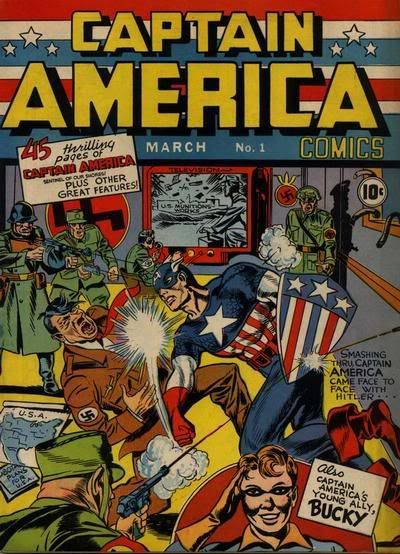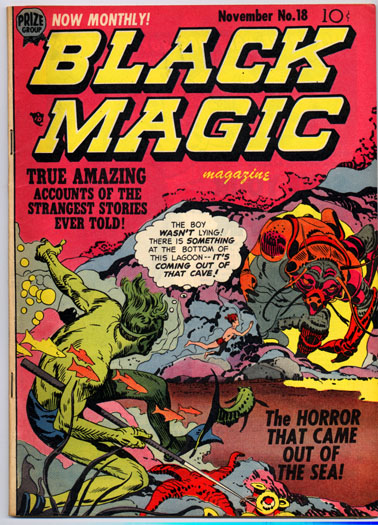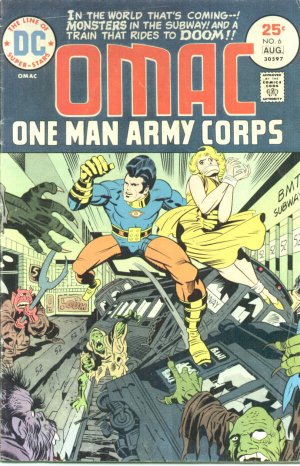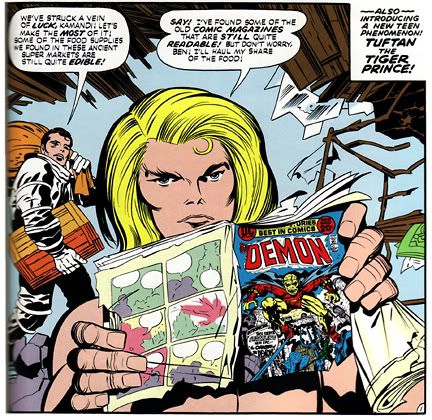
(
Roger Moore as Simon Templar, AKA
The Saint, the action/adventure rogue/hero created by Leslie Charteris.)
(I am indebted to
Burl Barer's essential tome
The Saint: A Complete History in Print, Radio, Television and Film 1928-1992 (McFarland, 1992) for assisting me in the writing & researching of this posting.)

(
Leslie Charteris.)
It's kind of embarassing to admit it, being a librarian who preaches to the choir about the virtues of reading, but I became a fan of Leslie Charteris'(1907-1993)
Saint character thanks to the long-running 1962-69 British TV series starring (and later co-produced by)
Roger Moore . The series (originally in black and white, then for its last 45 episodes, in color) was based on the short stories & novels about the exploits of one Simon Templar, a modern-day "Robin Hood", who'd steal from the wicked (gangsters, corrupt business & political leaders) and give to those less well off...with a small percentage taken for himself. Introduced by author-creator
Leslie Charteris in the 1928 novel
Meet The Tiger , Templar comes off as an enthusiastic, slightly foppish, dandy who's good with his fists and knows how to use a gun and knife. As Charteris got older, Templar started maturing in outlook, as well as actual age. By the time of 1964's
Vendetta For The Saint ,
the last novel in the series credited to Charteris (ghost-written by
Harry Harrison, author of the science fiction classic
Make Room, Make Room and
The Stainless Steel Rat , though according to Saint scholar Burl Barer, Charteris did extensive rewriting on it), Templar, feeling his advancing years, prefers to avoid getting in a fight with an armed gangster (though when the chips are down, ol' Simon can still throw a punch). Prior to this novel, Charteris had, since 1948, written only short stories featuring the character, allowing him to develop the plots more fully without stretching them out.



Charteris' early stories & books met moderate success in the UK and didn't really take off in the US until the 1935 publication of
The Saint In New York. RKO optioned the film rights and began producing a series of movies with Louis Hayward & George Sanders as Templar from 1938-1941. But the studio didn't cotton to a protagonist who flouted the law & got away with it. In the books, Templar wasn't above committing murder to see justice done and he hardly ever worked with the sanction of law enforcement agencies. Templar often played cat-and-mouse games with Scotland Yard's Inspector Teal and NYPD detective Inspector Fenwick. And though he had a kind-of-steady girlfriend in the Patricia Holm character, Simon wasn't above playing around.
Hollywood felt otherwise and pretty much neutered the character into a lovable rascal who'd always work within the law. Charteris complained so much that RKO stopped making Saint films and optioned the rights to a similar charcter, "The Falcon". The Saint meanwhile continued to appear in comic strips and books, new short stories and a long running radio series that included a young
Vincent Price as Templar.
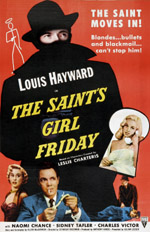

After a one shot film in 1954 with Hayward (
The Saint's Girl Friday), Charteris resisted all attempts to adapt The Saint on film or television. Producers
Robert S.Baker &
Monty Berman , with backing from Sir Lew Grade's ITC production company (based in England, where the series was filmed), struck a deal to produce an hour-long series based on Charteris' books & short stories.

Casting
Roger Moore as Templar was a stroke of genius on Baker & Berman's part. Moore managed to combine his natural witty charm and comedic skill with a sense of steely eyed presence that embodied perfectly the world-weary, slightly cynical Saint of the later novels (though Charteris at first thought the then-36-year-old Moore too young for the role, he quickly grew to like the actor's take on Templar).

(
Roger Moore as
The Saint with frequent series regular
Ivor Dean as (sometimes) friendly nemesis
Inspector Claud Eustace Teal from Scotland Yard.)
Every episode would open with Simon's take on a certain topic, such as fashion, politics or the Arts. (In the black & white episodes, Roger Moore would speak directly to the audience. In the color ones, he'd do a voice-over instead.) Somehow the topic would be related with that episode's plot. Every week, Simon would either be in London or in a foreign country (played by the studio backlot in England). And of course somebody would go up to him and say a variation of the line "
So, you're the famous (or infamous) Simon Templar!" Cue the appearance of a halo over Moore's head and the opening credits & theme music would roll,
as you can see here.

(
Leslie Charteris and
Roger Moore in the 1960s. Yes, they got along.)
The show was an international success and ran in syndication in the US until 1967, when NBC picked up the (now shot in color) series. By then the producers had exhausted the Charteris lode and produced new plots, many of which were a variation of the "pretty daughter of a missing scientist/business magnate/world leader needs Simon's help" type. Only John Kruse's scripts ("The Fiction Makers", "The Death Game", plus a terrific updated 1963 adaptation of Charteris' 1938 novel
Prelude For War, filmed as "The Saint Plays With Fire", and the two part adaptation of
Vendetta For The Saint) had any real fresh spin.

After the series ended, Charteris continued producing new Saint novels & novellas by other writers, often adapting the TV scripts themselves (especially John Kruse's). The last Saint books were set in the 40s & 50s to offset concerns about the character's aging. 1983's
Salvage For The Saint was the last adventure written about Simon Templar until Burl Barer's
Capture The Saint (published & distributed by
The Saint Club ) in 1997. A short lived 1978-79 series
Return Of The Saint with
Ian Ogilvy as Templar followed. There was a 1987 pilot film, loosely based on
The Saint in New York , with Tom Selleck-lookalike
Andrew Clarke for CBS and a slightly longer syndicated series of TV films (1989-90) starring
Simon Dutton as The Saint. And of course, there was the horrible 1997 feature film with
Val Kilmer .



Dan Bodenheimer's
Saintly Bible , has, for over 15 years, kept Saint fans up-to-date with the latest incarnations of Simon Templar. The
recent news that James Purefoy of HBO's
Rome has been cast may stir new interest in a character that, as somebody once said, brings out the fourteen-year-old in all of us.
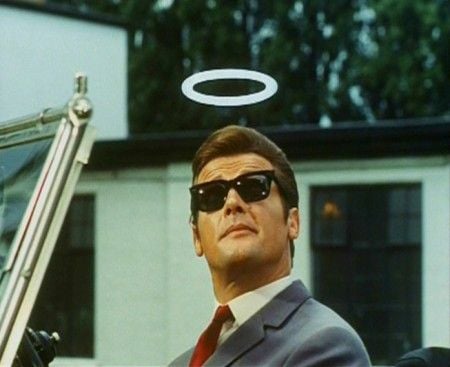
And though the books are currently out-of-print, I still, when I find a copy, read them. (I too like the later Charteris short story collections from 1948-63.) They're just a lot of (well-written) fun! -Ed



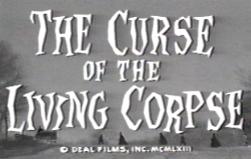

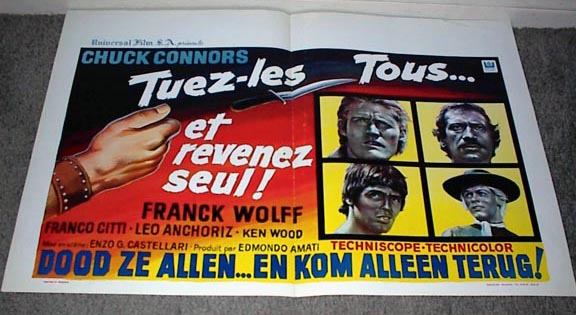

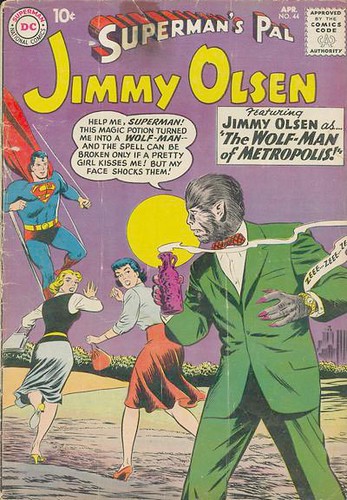


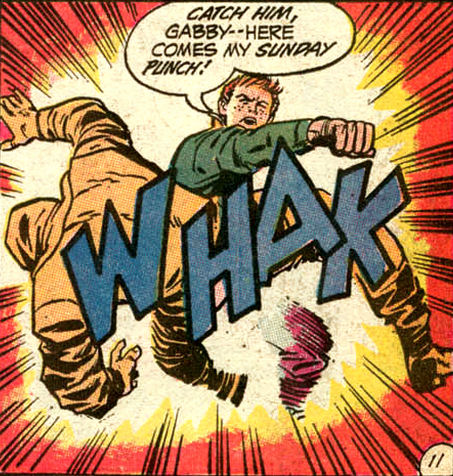




.jpg/411px-Jack_Kirby_(1982).jpg)
